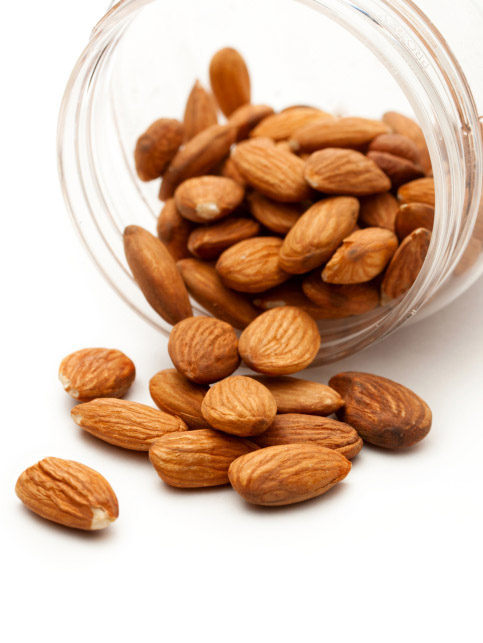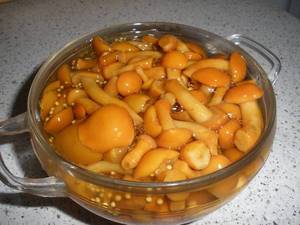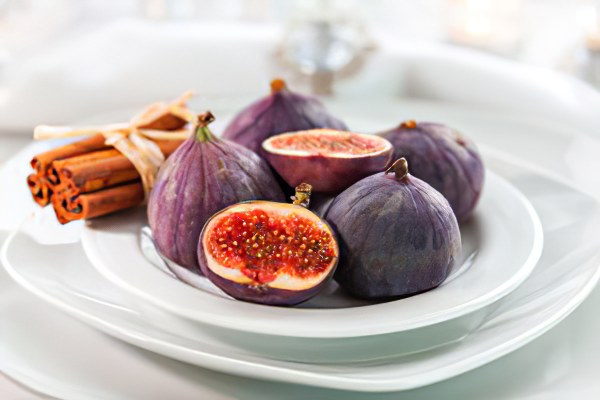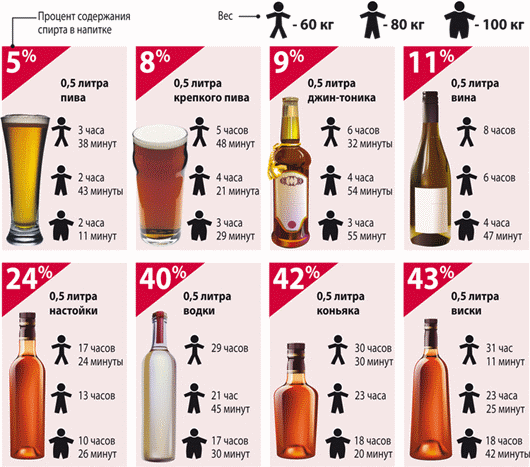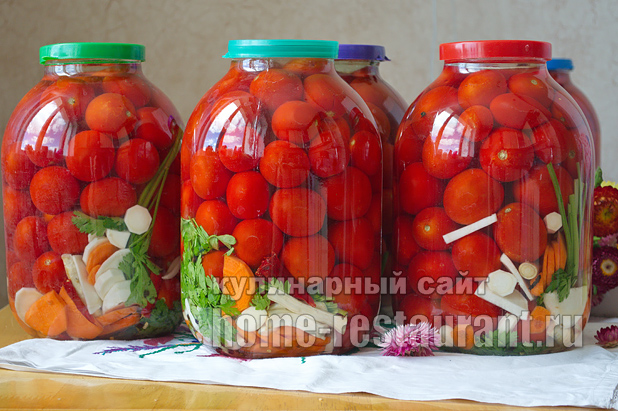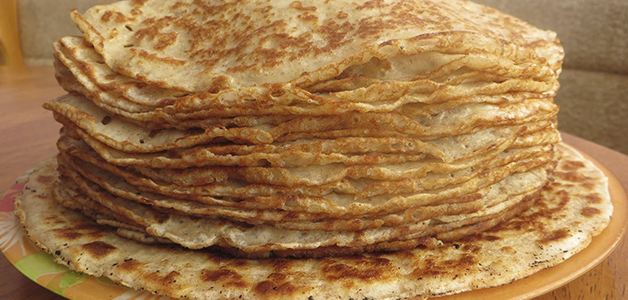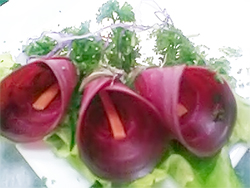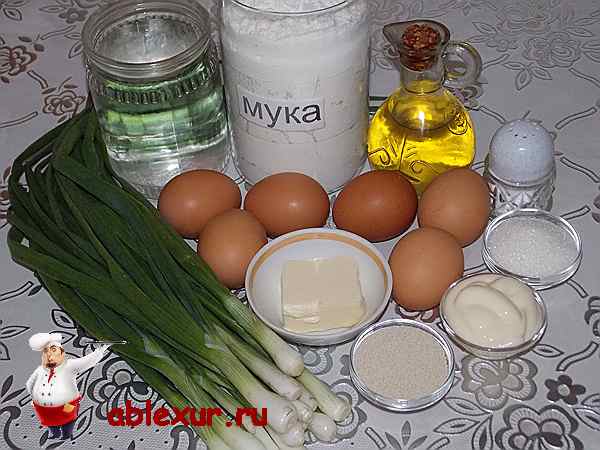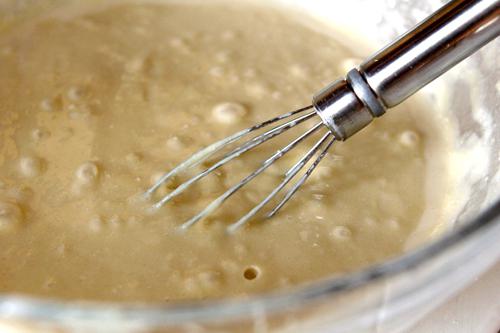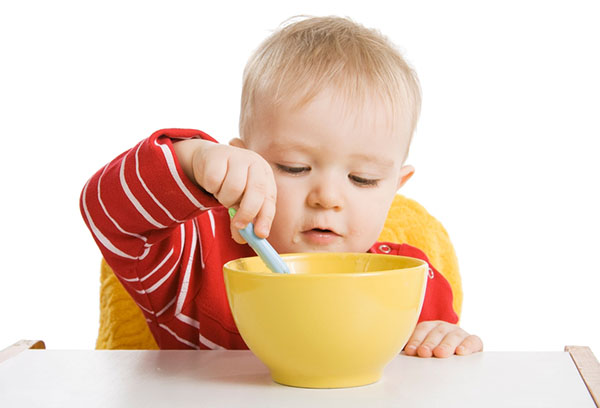So that the icing on Easter cakes would not crack. How to cook icing for Easter cake so that it does not sprinkle: recipe
When the cake you cooked at home is already baked, it is time to decorate it with festive and delicious glaze with beautiful decorative elements. This is the most exciting moment, because so much effort and effort is invested in Easter baking, and I really want all this to not be spoiled by an unsuccessful recipe for fudge or glaze.
Especially the icing on the sandwich is loved by children, they always try to eat the tip first thing, so I do not want to summarize their expectations.
By the way, in the last article you can, in this article we will consider several options for icing recipes for Easter cakes and other festive pastries. It is very important to pre-prepare a test sample of glaze, for example, half a serving, to make sure that this is exactly what suits all your wishes: - it solidifies well, - does not crumble, - does not stick, - elements for decorating Easter cake are well attached and hold on. Because gelatin can be different, and sugar can fail.
And the children will not let the abyss of your trial party, they will gladly conduct a tasting of all its properties, and even tell you what can be improved in the recipe.
So it will be fun and save you from unnecessary risk.
According to this recipe, the icing for the Easter cake is obtained, which does not stick and does not crumble. Such glaze hardens quickly enough, so immediately attach all the decorative elements to it until the surface has frozen.
It is very important not to add gelatin to too hot syrup, otherwise gelatin will lose its properties and glaze will fail.
Strictly observe the proportions of the ingredients. Apply icing to a fully cooled cake. Leave the icing to harden for at least 12 hours (for example, at night).

- gelatin - 1 teaspoon
- sugar - 200 grams
- 6 tablespoons of water
- lemon juice - 3-4 drops
1. First, pour a teaspoon of gelatin with 2 tablespoons of water at room temperature for 10 minutes, so that the gelatin swells.

2. In a saucepan to 200 grams of sugar add 4 tablespoons of water and put on a small fire. Even if you think that there is little water, do not add more.

3. Keep the sugar on fire until it is completely dissolved and we get sugar syrup. Constantly stir the syrup in a saucepan.

4. Do not put gelatin in hot syrup, let it cool slightly, for about 5 minutes. Put the swollen gelatin in sugar syrup and stir quickly until it begins to solidify.

5. Beat with a mixer the icing at the highest speed until the mass turns white and increases in volume (about 3 minutes).
6. Without stopping whipping, add 3-4 (as much as possible) drops of lemon juice.
7. Quickly lower the cake in the icing until it begins to harden.

Sprinkle with icing and decorate with decorative elements. Glaze will harden in about 20 minutes, but still, let it stand in a dry place.
Royal glaze recipe that does not crumble
This icing is called royal icing. She came to us from England, where she decorated cakes, in particular, she was decorated with Queen Victoria's wedding cake. In general, this is an old, centuries-old recipe, but it has its own secrets, and in this article we will reveal them to you.
Use Royal icing not only for Easter cakes, but also for gingerbread, cakes, cookies. Jewelry is made from it (flowers, figurines, letters). This glaze can serve as food glue, for example, for the construction of gingerbread houses. Glaze can be tinted with food colors, it turns out very beautifully. It is prepared from powdered sugar and protein.

For cooking, we need:
- 1 egg white
- 1 cup icing sugar
- vanilla
1. The protein must be chilled. Pour it into a container so that it can be whipped with a mixer.

2. Beat the protein until a light foam appears and then pour the powder in parts to it. Powdered sugar must be very finely ground.

3. Without stopping the mixer add lemon juice and vanilla.

4. Dip the completely chilled Easter cake into the icing, if necessary, we correct the protein cap with a spoon.
Then the most important thing: so that the icing does not crumble, it is necessary after 20 minutes, when the icing hardens, put the cake for 2.5-3 hours in a large enameled pan and cover it tightly. If such a pan is not at hand, put each Easter cake separately in a large plastic bag and tie a bag. The next day, the glaze will be perfectly cut and not crumble.
And more important:
- Strictly measure the amount of ingredients.
- Cool the Easter cake completely before glazing.
- The icing should completely harden before packing the cake in a bag or in a pan.
Easter glaze that does not crumble
This recipe has an unusual ingredient - marshmallows. This is chewing marshmallow, which is sold in supermarkets. Marshmallow glaze is soft inside and dry outside, it does not stick and does not crumble. From it you can make a thick hat on the sandpiper. She perfectly holds decorative elements.

For cooking, we need:
- 100 grams of marshmallows
- 1 tablespoon of lemon juice
- 1 tablespoon butter.
- icing sugar 120 grams
1. Put all the ingredients in a bowl and melt in a water bath, over low heat. Stir our icing constantly so that the marshmallows do not stick to the hot walls of the bowl.

2. When all the ingredients have melted, add 120 grams of powdered sugar and mix quickly until smooth.

3. Very quickly, in a warm form, apply icing with a spoon to the Easter cake and glue decorative elements to it.

If the glaze is too thickened, you can put it back in the water bath, add some more lemon juice or water, melt it and continue to cover the cakes.
Egg-free recipe
For chocolate lovers we offer a delicious recipe for fudge for Easter cake. We will use white porous chocolate. In this embodiment, the fondant is not so snow-white, it will not turn out to be an air cap and heavy decorative elements will not be supported on it, but it’s chocolate! 🙂 Chocolates will understand me.

For cooking, we need:
- White porous chocolate bar
- 100 grams of powdered sugar
- 1-2 tablespoons of milk or water, as you wish
1. Pour 1 tablespoon of milk into powdered sugar. Mix well until smooth. We will add the second spoon as necessary if the glaze turns out to be too thick.
 2. In a water bath, melt a bar of chocolate. Make sure that the temperature of the chocolate does not rise above 45 degrees. Stoke it over low heat.
2. In a water bath, melt a bar of chocolate. Make sure that the temperature of the chocolate does not rise above 45 degrees. Stoke it over low heat.

3. Combine the sugar mass with melted chocolate, mix quickly and apply to Easter cake. If the glaze is too thick, add some milk. Do not make the icing too liquid, so that it is not all glass from the Easter cake.

After hardening, chocolate coating does not stick at all.
Video how to make chocolate fondant for baking
For those who have everything in chocolate 🙂 This frosting quickly thickens and hardens. You can use it not only for Easter cakes, but also for cakes, muffins, cookies. We will add some orange juice to it, but you can add water or milk.
For cooking, we need:
- sugar - 150 gr.
- cocoa - 20 gr.
- black chocolate - 40 gr.
- orange juice or water - 85 ml.
- butter - 40 gr.
Below in the video you can watch a step-by-step video recipe for the preparation of chocolate glaze. It is universal for covering any confectionery.
Cooking icing sugar icing
Recently, culinary experts surprise us with the flight of their imagination. Confectionery products are becoming like masterpieces of art. In full swing, color is used in decorating baking.
Try using colored glaze to decorate your Easter cake. Below we have compiled photos for you to inspire.


Of course, it is better to use natural dyes for food.
So for red, beet juice can be added to the icing, for yellow - carrot juice. For a green tint, you can use mint and spinach leaves. For brown tea or coffee, for violet - red cabbage. For rich yellow - turmeric, but then add something to the icing to mask the taste of turmeric, such as lemon or orange.
Below is a detailed video tutorial on how to make colored glaze using natural dyes.
A simple chocolate recipe
Another version of chocolate icing for Easter cakes and other pastries, which is very simple and quick to cook. Chocolate in this version of fudge is dark, so the little ones will turn out not to be a classic white color, but for those who love chocolate, it’s quite suitable
What we need:
- 90 g. Dark chocolate;
- 3 tbsp orange juice;
- 3 tbsp butter;
- 3 tbsp Sahara.

How to cook:
Put the chocolate, orange juice, butter and sugar in one bowl, put on a small fire and stir until the mass becomes homogeneous. Then you need to cool a little and you can lubricate the Easter cakes and pies prepared with glaze for Easter.
Cocoa Lemon Glaze Recipe
In this version of fudge, we use cocoa powder, the fudge will turn brown, suitable for Easter cakes and other pastries.

Ingredients:
- lemon and orange zest;
- 2-3 tbsp cocoa powder;
- half a lemon;
- 250 g of powdered sugar;
- 60-70 g of butter.
Melt the butter, add lemon juice, pour in powdered sugar, cocoa, mix everything well until a homogeneous thick mass. Chocolate-lemon icing for Easter cake, which does not crumble and does not stick, is ready.
Chocolate Egg Fondant
In this recipe, icing from cocoa powder will use egg white. It will turn out to be light brown.

Ingredients:
- 1 tbsp. powdered sugar;
- 1-2 egg whites
- 1 tsp vanilla sugar;
- 2 tsp cocoa powder;
- 1 tsp lemon juice or 10 drops of diluted citric acid.
Icing, vanilla sugar and cocoa powder for glaze for Easter, which will not crumble, mix in a deep bowl, put it in hot water. Then add lemon juice, egg whites and grind until smooth.
Coffee Glaze Recipe
For lovers of coffee taste, I offer this version of fudge for Easter cakes. The pastries decorated with this glaze will look very beautiful.

Ingredients:
- 300 g of sugar;
- 100 g strong black coffee.
We prepare strong black coffee, pour sugar into the bowl, pour the finished coffee into it and keep on low heat until the sugar is completely dissolved. Then pour the mass into a cup and beat until it begins to harden. Lubricate the tops of Easter cakes with icing.
Bon appetit and happy Easter!
Icing - This is a traditional decoration of cakes, desserts and sweet pastries, especially Easter. There are many options for its preparation.
Classic and most popular protein glaze recipe It is prepared very simply, quickly and beautifully on Easter cakes.
But it has one drawback - after drying, the glaze becomes very fragile, does not stick well on Easter cakes and crumbles when we cut them.
Today I want to show you unusual gelatin recipe without egg whites on gelatinwhich does not stick to the hands does not crumble and does not breakwhile remaining soft, snow-white, uniform and glossy.
LIST OF INGREDIENTS
- 100 gr. powdered sugar (sugar)
- 2 tbsp water (for powder)
- 1 g vanillin
- 1 tsp gelatin (5-6 gr.)
- 2 tbsp water (for gelatin)
SUPER GLAZING FOR KULICH- STEP-BY-STEP RECIPE
Pour a teaspoon of gelatin with two tablespoons of cold boiled water, mix well and leave for a while to make the gelatin swell.
Separately, pour the icing sugar into the stewpan, and add a choice of vanillin or a few drops of lemon juice.
There we add 2 tablespoons of water, mix well so that there are no lumps of powder and set the bucket on the stove over medium heat.
With constant stirring, bring the mixture to a boil. As soon as the syrup boils, remove it from the stove and add the well-swollen gelatin.
Stir thoroughly until the gelatin is completely dissolved.
And while the sugar-gelatin mass has not cooled, beat it with a mixer at high speeds into a strong snow-white foam.
As soon as you feel that the mass begins to thicken - the glaze is ready, in time it will take no more than 5 minutes.
Glaze should be thick, snow-white and glossy
And if you want to cook multi-colored glaze, then at this stage, add food colors to it.
Since gelatin hardens very quickly, it is advisable to put the ladle in a bowl of boiling water while we apply icing on Easter cakes.
Decorate the fully cooled holiday cakes with finished gelatin glaze.
Correctly prepared glaze by consistency resembles thick sour cream.
You can apply it with a brush, a silicone spatula or just dip the cake in the icing.
And while the icing is still liquid, we decorate Easter cakes with confectionery powders, candied fruits or nuts.
And also you can look very successful and proven classic yeast cake recipe that I prepared last year, link - https://youtu.be/Uog2ZWLkvZI
This amount of glaze was enough for me for 4 medium and 5 small Easter cakes, and a little more remained, despite the fact that I applied the glaze in a thick layer.
Glaze freezes very quickly, but dries and stops sticking after a day.
The peculiarity of this glaze is that even after complete drying it remains soft and elastic, does not stick to hands at all, retains its shape and luster.
After a day, I propose to see what we got.
The glaze is well dried, while remaining soft as a marshmallow, and completely not sticky.
And now I will cut the cakes and show how the icing will hold on them.
The glaze adheres perfectly to the sandpiper itself, does not reach for the knife, does not crumble, and does not crumble, like an ordinary protein.
The icing is delicious and more reminiscent of marshmallows, great not only for Easter cakes, but also for rolls, muffins and other sweet pastries.
In order not to miss new, interesting video recipes - SUBSCRIBEto my youtube channel Recipes Collection👇
👆 1 click subscription
Dina was with you. Until new meetings, to new recipes!
SUPER GLAZING FOR KULICH- VIDEO RECIPE
SUPER GLAZING FOR KULICH- PHOTO



























When you prepare Easter cakes for Easter, it takes the most effort and time to prepare the right dough and bake it further. It is not surprising that when it comes to the glaze and decor of Easter cakes, most housewives prefer the simplest recipes that do not require special culinary skills. In this case, the main criterion that is put before the coating for the cake - the glaze should not crack and crumble. It should also be tasty, smooth and well distributed over the surface of Easter baking. All the above characteristics correspond to each step-by-step glaze recipe from our today's article. Next, you will learn how to make a delicious white icing for Easter cake without eggs (egg white), with gelatin, powdered sugar, starch. And also we will reveal the secrets of preparing a classic protein glaze, with which you can decorate not only Easter cake, but also any other pastries.
Delicious protein glaze for Easter cake, step by step recipe with photo
The first to your attention we offer a recipe for delicious protein glaze for Easter cake according to the classic recipe with step-by-step photos. To prepare this coating, it is better to use an electric mixer, since the glaze requires a thorough and rather long whipping. Read more about how to prepare delicious protein glaze for Easter cake in a step-by-step recipe with a photo below.
Essential ingredients for a delicious protein glaze for Easter cake
- sugar - 250 gr.
- protein - 2 pcs.
- water - 120 ml.
- 1/4 lemon juice
Instructions on how to prepare protein glaze for Easter cake
Do it yourself white icing for Easter cake with sugar without protein, the recipe step by step
If you are afraid to use store eggs for making a protein coating for Easter cake, but want to get a delicious white icing with your own hands, then pay attention to the following recipe with sugar without protein. This version of the glaze is very simple and even a child can cook it. Learn how to make white glaze for Easter cake without protein with sugar do-it-yourself further.
Essential Ingredients for Protein-Free Glaze with Easter Cake
- sugar - 150 gr.
- water - 4 tbsp. l
Instructions on how to make white icing with sugar for Easter cake
How to make icing so that it does not crumble, a simple recipe for Easter cake
Persistence is a very important characteristic for glaze in general, and for Easter baking in particular. Agree, I do not want the coating on the Easter cakes to burst and crumble along with a beautiful decor. Therefore, many housewives are in search of a simple recipe for icing for Easter cake, which would not crumble and make baking beautiful. This is the recipe waiting for you next! All the secrets of how to make icing so as not to crumble are in a simple recipe for Easter cake below.
Essential ingredients for glaze for Easter cake, which does not crumble
- protein - 1 pc.
- powdered sugar - 1 cup
- lemon juice - 1 tsp.
Instructions for a simple recipe on how to make icing so that it does not crumble
Simple and tasty icing for Easter cake without egg white, step by step recipe
The following simple step-by-step recipe focuses on another version of delicious glaze without the use of egg white. It turns out that to prepare sweet icing for Easter cake, just two simple ingredients are enough. Which ones, find out from a step-by-step recipe for a simple and tasty icing for Easter cake without egg white below.
Essential ingredients for a simple glaze without egg white for Easter cake
- icing sugar - 200 gr.
- lemon juice - 6 tbsp. l
Instructions on how to make simple and tasty icing for Easter cake without egg white
Egg-free glaze for Easter cake with starch at home, a simple recipe step by step
At home, it is easy to cook and glaze with starch and without eggs, which is ideal for Easter cake. The recipe is based on white chocolate and butter, so the finished glaze is very shiny and thick. And thanks to the use of starch, a coating of such a glaze holds its shape well even without the use of proteins. How to cook icing for Easter cake without eggs with starch at home, read on.
Essential ingredients for egg-free starch glaze at home
- icing sugar - 150 gr.
- white chocolate - 100 gr.
- butter - 50 gr.
- nonfat milk - 6 tbsp. l
- cocoa - 4 tbsp. l
- starch - 1 tsp
Step-by-step instructions for a simple egg-free glaze recipe with starch
Easter egg gelatin icing step by step recipe
To prepare sugar icing for Easter cake, which will not crack, crumble and crumble, you can also use gelatin. At first glance, it might seem that this version of the festive glaze is rather capricious in cooking. But in fact, there are no special secrets and difficulties in this option. See for yourself by mastering the preparation of sugar icing with gelatin for Easter cake from the following step-by-step recipe.
Essential Ingredients for Sugar Glaze with Gelatin for Easter Cake
- sugar - 180 gr.
- water - 5-6 tbsp. l
- instant gelatin - 1 tsp.
Instructions for a step-by-step recipe for glaze with gelatin for Easter cake
A simple recipe for protein glaze for Easter cake sugar-free step by step
Can there be icing for easter diet cakes? Can! For example, in our next simple protein glaze recipe for Easter cake, there is neither sugar nor powdered sugar. Nevertheless, the ready-made glaze turns out to be sweet, smooth and very beautiful. More details on how to prepare a simple recipe for protein glaze for sugar-free Easter cake further.
Essential Ingredients for Protein-Free Glaze for Easter Cake
- proteins -2 pcs.
- a pinch of salt
- milk powder - 1, 5 tsp.
- sweetener to taste
Instructions for a simple protein glaze recipe without sugar
How to make icing from icing sugar for Easter cake at home, video
Want to see clearly how you can make icing from icing sugar for Easter cake at home? Then the next step-by-step video is just for you. This workshop shows how to prepare icing from icing sugar for Easter cake at home from protein, icing sugar and lemon juice. The recipe is very simple to implement and certainly will not cause difficulties in cooking.
Delicious white icing for Easter cake is just as important as good composition of the dough for this Easter baking. There are many options for glaze preparation, starting from the traditional protein and ending with simple options from powdered sugar and lemon, with gelatin or starch. Our today's article contains only the best and most proven recipes for glaze that does not crumble, crumble, and does not crack after being applied to Easter pastries. We hope that one of these step-by-step recipes with photos and videos will surely be to your taste and you can easily make delicious icing at home.
Kulich is a traditional dish on the Easter festive table. Each hostess has her own recipe for butter, tasty and fragrant Easter cakes. However, it is important to prepare not only delicious dough, but also decorate the finished baking in an original way. Therefore, you need to know how to make the right glaze, which will differ in pleasant taste and appearance. Glaze for Easter cakes, which does not sprinkle, should have a uniform and dense consistency. After coating with glaze, you should put the cake for several minutes in the oven to make the glaze more elastic. It is important not to overexpose the Easter cake, otherwise the icing may become fragile. In this article you will find how to make the right icing for Easter cake, the recipe, so as not to sprinkle, was delicious and beautiful.
Gelatin Glaze
One of the recipes for icing for Easter cake is the use of gelatin, which will give the mass a thick and soft texture.
Ingredients:
- Sugar - 200 g.
- Water - 130 ml.
- Gelatin - 5 g.
30 ml of water should be added to gelatin. Leave for half an hour to make it swell.
To prepare sugar syrup, mix sugar and the rest of the water, mix thoroughly and put on a small fire. Stir constantly to completely dissolve the sugar. Ready syrup should be completely transparent and remind the consistency of liquid honey.
Add gelatin to the syrup. Stir, then beat for several minutes with a mixer. The finished glaze should be white. Leave the icing so that it cools down, then put on the Easter cake. Do it quickly, otherwise the glaze may freeze prematurely.
A characteristic feature of gelatin-added glaze is the absence of fragility, which is why it remains on the sandwich when cut. To give the glaze a bright color and aroma, you can add natural dyes to it.

Non-sticky protein glaze
Another disadvantage of the glaze is its excessive stickiness. For the preparation of non-sticky and non-fragile glazes, a traditional protein-based recipe can be used. Its feature is the use of powder instead of sugar, as well as the addition of lemon juice.
Ingredients:
- Protein - 1 pc.
- Powdered Sugar - 250 g
- Lemon juice - 15 ml.
Separate the protein. Gently mix it with a whisk or a fork. Gradually add the powdered sugar while continuing to mix. It is better to purchase store powder. It has a finer grinding than homemade powder, and it also includes starch.
Then slowly add lemon juice. Using its amount, you can adjust the density of the glaze. Beat thoroughly and decorate icing cakes. This should be done immediately after the preparation of the glaze, otherwise it will quickly harden.

Icing on yolks
Traditionally, icing for Easter cake is prepared on the basis of egg whites. However, if you need a glaze that does not crumble, bright and tasty, pay attention to the recipe based on egg yolks.
Ingredients:
- Sugar - ½ cup.
- Powdered sugar - ½ cup.
- Yolks - 2 pcs.
- Water - 30 ml.
To begin with, powdered sugar must be whipped with yolks so that a thick and high foam is obtained.
Then we proceed to the preparation of sugar syrup. To do this, add some water to the sugar, mix, and melt over low heat. The syrup should acquire the consistency of liquid honey. Allow to cool slightly. If you inject the yolks into the syrup immediately, they can curl up. When the syrup becomes warm, gradually introduce the yolks with powder.
With a ready-made mixture, immediately coat the tops of cakes. Such glaze hardens very quickly, and it will not work to melt it for reuse.

Glaze for Easter cake without the use of eggs
Most often, eggs are used to make white glaze to decorate Easter cake. However, delicious glaze with a pleasant aroma and taste of citrus can be obtained without the use of proteins.
Ingredients:
- Powdered Sugar - 200 g
- Lemon juice - 20-30 ml.
For the preparation of this type of glaze, it is better to use powdered sugar. It is completely soluble and does not contain grains of sugar. Lemon juice should be gradually introduced into the powder and mixed thoroughly. The amount of juice used depends on the required color of the glaze. Anyone who likes a more saturated color should add a minimum amount of juice.
This glaze can be applied with a special brush, or you can simply turn the cake, dip it in the glaze and turn it over. Frost the glaze instantly, and does not require additional baking in the oven.

White chocolate icing
An original way to decorate Easter cakes for Easter. Glaze without white chocolate does not sprinkle if porous chocolate is used for its preparation.
Ingredients:
- Chocolate - 100 g.
- Milk - 30 ml.
To begin with, a tile of white porous chocolate should be broken into cubes, and melt in a water bath. Then gradually add milk to the melted chocolate. Its amount depends on the required consistency.
The finished mixture must be applied immediately. Chocolate icing is quite sticky, and its color will not be perfectly white. However, its advantages include the fact that it does not crumble, and besides, it is incredibly tasty.

Perfectly white non-fragile glaze
If you want to make a perfectly white glaze that will not crumble and break, you can cook it on the basis of sugar and vinegar. This recipe will require an effort, but it's worth it.
Ingredients:
- Sugar - 8 tbsp. l
- Water - 6 tbsp. l
- Vinegar 3% - 1 tsp.
If you use ordinary vinegar, you must dilute it with water to the desired concentration. Sugar and water should be mixed and boiled to make a thick sugar syrup. Then gradually add vinegar.
Cool the resulting glaze. Beat in a thick foam. To do this, you need to beat it for 10-15 minutes. Apply the finished glaze to Easter cakes until it has frozen.

Chocolate glaze
One way to make icing for Easter cake so that it does not spill is to use chocolate. In this case, you can use both white and dark chocolate.
Ingredients:
- Chocolate - 50 g.
- Powdered Sugar - 80 g.
- Potato starch - ½ tsp.
- Cocoa - 2 tbsp. l
- Oil - 30 g.
- Milk - 4 tbsp. l
Combine the powder and milk. Bring to a boil over low heat, stirring constantly so that the powder is completely dissolved.
We break chocolate into pieces and put to powder. Add the butter. Once again, bring the mixture to a boil so that the chocolate and butter dissolve. It remains only to add cocoa powder and starch, and mix the mixture thoroughly.
Set the icing off the heat and let it cool slightly. Apply to Easter cake with a special brush. Such a glaze is incredibly tasty and beautiful. From above you can sprinkle it with chocolate chips of a contrasting shade or colored sprinkles to make cakes even more elegant.

Making icing for Easter cake is not as complicated and time-consuming process as baking Easter cakes. However, if you make mistakes or use low-quality ingredients, the icing will crumble, crumble, and spoil the appearance of Easter baking.
Very soon we will delight the household and friends with our magnificent Easter cakes. You can see recipes for making special holiday dough or
But what unites all this festive baking? Of course, beautiful snow-white glaze, which is covered with our sweet sweet culinary creations.
But it’s bad luck, at first some types of this sweet coating look simply amazing, but after a few hours they begin to crumble, break, or crumble a lot when cutting the “apiary” into pieces.
But this does not matter! After all, you can always cook a magnificent, snow-white, uniform and smooth glaze according to special recipes that will not allow the "snow-white hat" to crumble and upset us.
The secret of non-shedding glaze is that it must be thick, viscous and at the same time uniform in structure. She looks like thick sour cream.
Very often experienced housewives to better fix the “white watering” and give it maximum elasticity send coated baked goods in addition to the oven preheated to 180 degrees for 5 minutes.
Only here it is very important to seize the moment, so that due to the heat, the delicate and fragile coating does not become dark and wither. Otherwise, these manipulations with the oven will lead to the opposite result and everything will crack and crumble even more.

But the biggest trick of experienced chefs is to use gelatin as one of the main ingredients! It is he who gives the plaster elasticity, does not allow it to spread during application to the surface. And also does not allow crumbling when the knife passes through the blade through a dried, sweet white beauty on pastries.
We will need:
- Sugar - 1 cup.
- Water - ½ cup + 2 tbsp. l
- Edible gelatin - 1 tsp.
Cooking:

1. Pour gelatin into a mug or small deep plate and pour two tablespoons of warm water into it. Stir it well and let it brew for about 30 minutes so that it can bloom and swell well.

2. In order not to lose time, about five minutes before the gelatin is ready, pour sugar in a clean saucepan and fill it with half a glass of water. Put on a small fire and with constant stirring to achieve complete dissolution of sugar, to get a sweet transparent syrup, somewhat reminiscent of a very thin honey.
Once this happens - remove the pan from the heat and let it cool down to at least 50-60 degrees.

3. Carefully, in order not to burn yourself, introduce the swollen gelatin into the sugar substance, and then, using the mixer, beat it for 3-5 minutes at medium speed, so that the mixture mixes well and starts to whiten and thicken right before your eyes.
As soon as a beautiful smooth creamy mixture is obtained, whipping can be stopped.

If you want to add colors, then during whipping you can add any food coloring. The same can be said about your favorite flavor.
4. To prevent icing from spreading over the Easter cake, it is necessary to cool it slightly and only then dip the pastries into it, or use culinary brushes or spatulas.
How to make icing with icing sugar
Very many do not eat eggs in connection with their beliefs, being vegetarians. Many have an allergic reaction to them. And someone just doesn’t consume a raw product, afraid to get salmonellosis.
Therefore, for them there is always the opportunity to prepare a traditional jewelry based on only 2 publicly available components. And only then you can turn on your imagination and use taste preferences, adding at least chemical culinary colors and flavors, at least natural spices in the form of vanillin, ground cinnamon or citrus zest.

This recipe is without eggs, and therefore it can be safely taken for service to everyone who does not eat them due to certain circumstances.
We will need:
- Icing sugar - 1 cup.
- Water - ½ cup.
Cooking:

1. To give the product maximum uniformity and airiness, it is necessary that the icing sugar accumulates oxygen. To do this, it is advisable to sift it immediately through a sieve into a bowl, in which it is further planned to prepare the desired snow-white consistency for coating.
2. Water must be heated to a temperature of 40 degrees so that when it is combined with the powder, lumps do not form and the sweetness quickly and evenly dissolves.

3. Pour warm water into a bowl of powder with a thin stream with constant stirring.

Instead of water, you can use milk, juice, fruit drink or a dissolved cocoa drink.
4. To make the mass a little thicker, it is best to beat it with an additional whisk for a couple of minutes.

5. Now baking can be dipped in the resulting snow-white mixture and allowed to dry.
The thicker the coating, the longer it will dry.
The recipe for decorating Easter cakes with gelatin and without eggs, like marshmallows
Recently, I found a glaze recipe that comes out almost like a sweet, thin marshmallow.

Having experimented a little with a decrease in the rate of crystallization of sugar by adding citric acid, I managed to achieve a little viscous crystallized sugar coating of Easter cakes.
We will need:
- Sugar - 1 cup.
- Water - 2 tbsp. l + 4 tbsp. l + 0.5 tsp
- Edible gelatin - 1 tsp.
- Citric acid - 1/4 tsp
- Vanillin, food color, flavorings - to taste.
Cooking:

1. In a deep cup or glass, soak gelatin crystals in 2 tbsp. l warm water. Let it swell for 15-30 minutes (depending on the quality and recommendations of the manufacturer).

2. Mix ½ tsp hot water with воды tsp. citric acid so that the crystals are completely dissolved and cooled to room temperature.
The resulting lemon mixture will help control the rate of hardening of the glaze.
In this case, the finished coating will be sufficiently elastic and tender for only half an hour, and then it will harden, so it will be necessary to act very quickly when smearing. The larger the lemon mixture, the more time you will have left to work with the finished product.

3. Pour sugar into the stew-pan and pour 4 tbsp of it. l warm water and mix well.

4. Put the saucepan with contents on a slow fire and with constant stirring, bring to complete dissolution of the sugar crystals. Depending on the quality of sugar, you may just need to heat to 50-70 degrees, or bring the syrup to a boil.
Remember that the syrup should not boil, because it quickly crystallizes into one continuous candy.
If you add more water for 1-2 tablespoons, then you can get marshmallow icing.
5. Add lemon mixture to sugar syrup and mix well.

6. Into the hot transparent lemon-sugar mixture add swollen gelatin and immediately beat everything with a mixer to a creamy state with steep stable peaks. Cool to 40-50 degrees, otherwise the mixture may leak a little.
7. During the whipping, add a little vanillin or any other flavoring and coloring additive of your choice.

8. Dip the pastry into the ready-made airy viscous mixture or apply it on cakes with a culinary spatula. It is advisable to immediately sprinkle with colored dusting. Then the coating dries and the dusting does not stick anymore.
9. Set the finished culinary masterpiece aside and allow it to cool so that the icing crystallizes and stabilizes into a beautiful “hat”.
Glaze with gelatin, which does not crumble and does not crumble
We will need:
- Gelatin - ½ tsp
- Water - 3 tbsp. l
- Sugar - 100 gr.
Cooking:

1. Heat the water to 70 degrees and dilute with one tablespoon of gelatin in a cup. It is necessary to stir it intensively so that the gelatin crystals dissolve and become a homogeneous transparent jelly-like mass.
2. Pour sugar into a small saucepan or iron bowl and pour the remaining 2 tbsp into it. l water. Mix well and put on low heat so that the sugar is dissolved and sugar syrup is obtained.

3. Once the sugar has dissolved, immediately mix it with steamed gelatin jelly, remove from heat and let cool slightly with constant stirring.

4. Using a mixer or a special nozzle in the form of a whisk on a blender, beat the sweet mass to a beautiful white airy foam.

5. Immediately apply this beautiful foam to Easter cakes, make a colored dusting on top and allow the coating to cool completely. It will take less than ten minutes to completely solidify the thin-layer “hat”.
If glaze is applied with a thick “bold” layer on a pair of large Easter butter cakes, then it may take up to one and a half hours. But after this, this coating will not only not stick to your hands, but will not crumble when cutting.
Video on how to cook gelatin-free icing with eggs
As a bonus, in a video recipe specially made for the article, I would like to show you how you can cook very tasty icing for Easter cakes, which was mentioned above. You can see that cooking it is not difficult. Everything is fast, simple and delicious!
The coating is snow-white and dries quickly.
She really does not crumble, even after a few days - she personally checked it the other day !!! It also holds well and does not crumble when cut.
A special recipe for decorating Easter cakes from proteins
Perhaps the most classic is protein glaze. Usually they don’t bother much with it - they poured everything into one cup, beat and coated. But with this approach, in a few hours it will already begin to crumble, crack and crumble.
If you carefully follow the sequence of actions and add a little salt, you get an excellent plaster, which will not be inferior in its properties to gelatin.
We will need:
- Icing sugar - 1 cup.
- Chicken Egg - 1 pc.
- Lemon juice - 1 tsp.
- Salt is a small pinch.
Cooking:

1. Gently break the egg and separate the protein from the yolk. We do not need the yolk - it can be used at our discretion in other dishes. We need only protein.

The small secret of high-quality glaze is that you need to use an egg not at room temperature, but chilled immediately from the refrigerator.
2. Add a pinch of salt in a cup to the protein and beat for several minutes until a thick foam keeps its shape. Such an egg mass of air when turning the cup on its side should not creep out of it, but firmly remain inside.

It is the salt that makes the protein foam very elastic.
3. Sugar powder must be sieved through a sieve, so that later the mixture turns out to be more uniform and smooth.
4. Pour sweet powder in small portions into whipped protein with constant stirring.

5. As soon as the powder combines with the protein and does not swell “dust” over the cup, proceed to whisk the mixture with a mixer. While beating, pour a few drops of lemon juice.

It is lemon juice that gives the glaze elasticity and density. But not only lemon can be used for these purposes - freshly squeezed pomegranate juice is well suited, which at the same time will also color the resulting mixture. Good substitutes for lemon can be an orange, pineapple or even kiwi.
6. As soon as our mixture turns into a mushy consistency, it can immediately be coated with pastries.
Allow to dry and enjoy the taste.
These are the recipes we have today. I think that everyone can find a recipe for themselves to their liking. It's so great when there is more than one recipe, and there is a choice. Tastes and preferences are different for everyone, and therefore there should be many recipes. And when you can find it suitable for yourself, you can leave it for a long time in your family recipe box.
Bon appetit and beautiful snow-white, not crumbling glaze on your Easter cakes!
